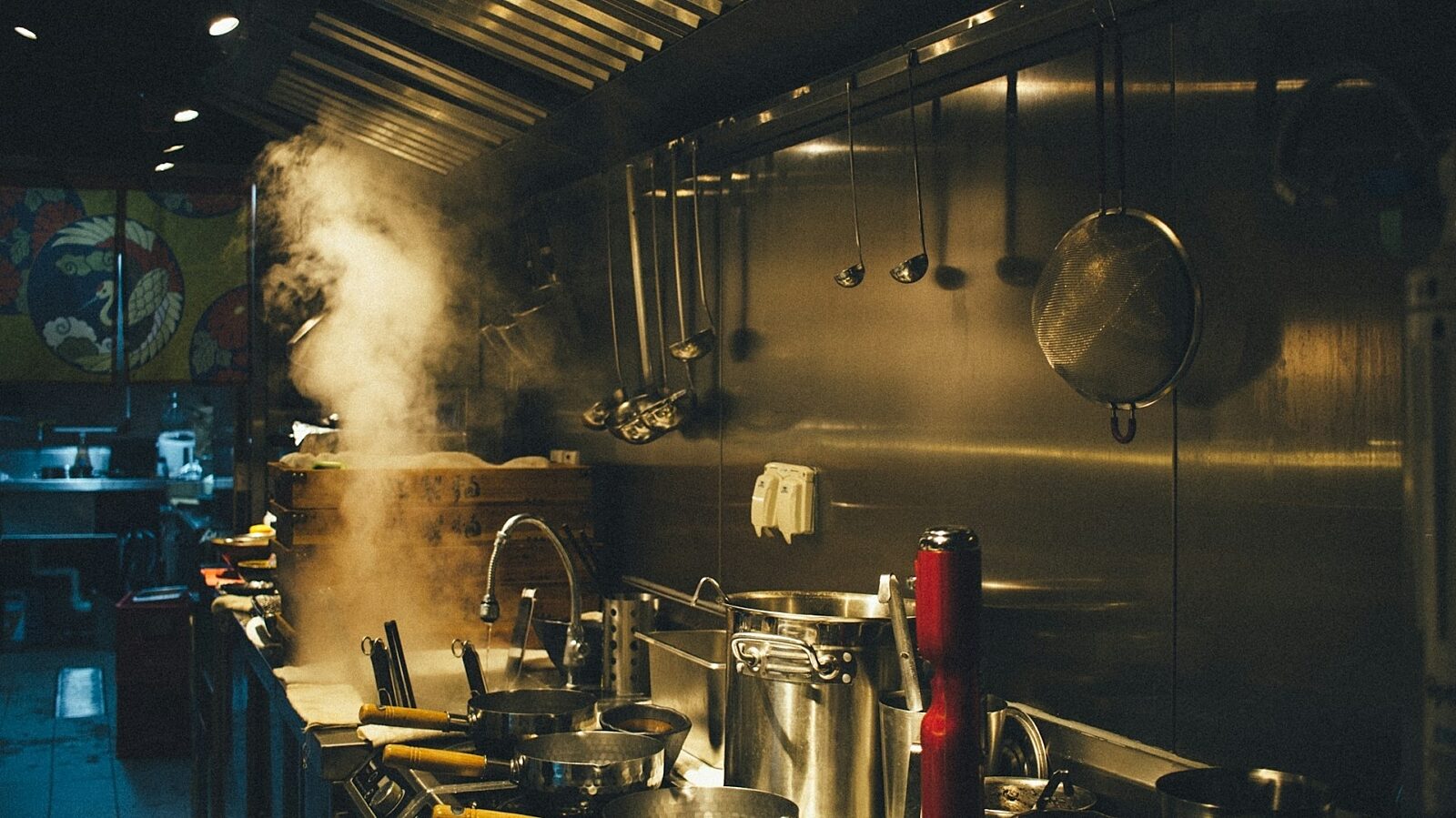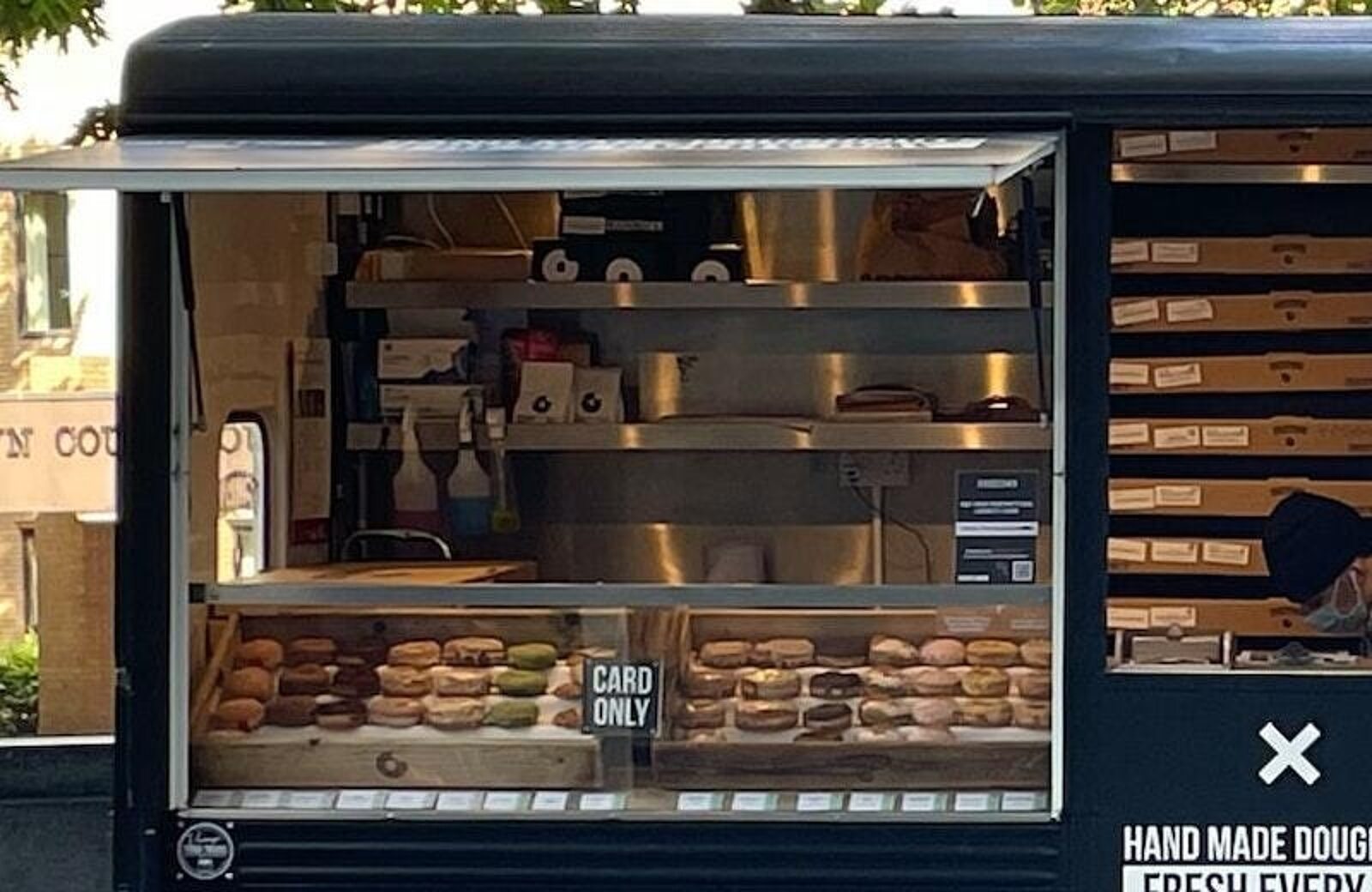
What is a Commissary Kitchen: How Restaurant Operations Use Commissary Kitchens
Learn why commissary kitchens are becoming indispensable for restaurants, caterers, and food entrepreneurs alike.
Marcel DeerAuthor


Starting a Commercial Kitchen Checklist
So many things go into opening a commercial kitchen. Use this free PDF checklist to set your new restaurant up for success.
What is a commissary kitchen?
A commissary kitchen, also known as a shared-use or commercial kitchen, is a licensed and fully-equipped culinary workspace designed for food preparation and storage. These facilities are rented out to food businesses, including restaurants, caterers, food trucks, and bakers, providing them with the necessary infrastructure without the high costs associated with building and maintaining a private kitchen.
Restaurants can leverage commissary kitchens in several ways to enhance their operations. For some, these kitchens serve as a central hub for preparing ingredients, cooking meals, and conducting bulk food production, which can then be distributed to multiple locations. This model is particularly beneficial for restaurant chains and delivery-focused businesses, ensuring consistency and efficiency across outlets. Additionally, commissary kitchens can supplement existing restaurant operations by handling overflow during peak times, facilitating menu expansion, and supporting off-site catering services. By utilizing commissary kitchens, restaurants can reduce overhead costs, maintain high food quality, and adapt more flexibly to changing business needs.
Restaurant Operations Manual Template
Use this free template to easily outline all of your operating procedures and make day-to-day operations as consistent as possible.

How do restaurants and food businesses use commissary kitchens?
1. Centralized Production
Commissary kitchens serve as centralized hubs for food preparation, allowing restaurants to streamline their production processes. Instead of each restaurant location having its own kitchen, all or most of the cooking, baking, and meal assembly can be centralized in one facility. This approach ensures consistency in food quality, portion sizes, and recipes across multiple outlets of a restaurant chain.
2. Cost Efficiency
Renting space in a commissary kitchen is often more cost-effective than building and maintaining a private kitchen. Restaurants can save on upfront capital expenditures, ongoing maintenance costs, and utilities by utilizing shared kitchen facilities. This cost efficiency is particularly advantageous for startups and small businesses looking to minimize expenses while scaling their operations.
3. Flexibility and Scalability
Commissary kitchens offer flexibility and scalability for restaurants and food businesses. As demand fluctuates or expands, businesses can easily adjust their kitchen usage without the constraints of fixed infrastructure. Whether it's ramping up production during busy seasons, launching new menu items, or accommodating larger catering orders, commissary kitchens provide the necessary space and equipment on a flexible rental basis.
4. Regulatory Compliance
Food safety regulations and health codes are stringent requirements for operating a commercial kitchen. Commissary kitchens are typically equipped with state-of-the-art facilities and adhere to all relevant regulations, ensuring that restaurants and food businesses maintain compliance without the hassle of navigating complex regulatory frameworks themselves. This compliance includes regular inspections, sanitation protocols, and proper handling of ingredients, minimizing the risk of health violations and fines.
5. Diversification of Revenue Streams
For restaurants looking to diversify their revenue streams, commissary kitchens offer opportunities beyond traditional dine-in or takeout services. Businesses can use these facilities to expand into catering, meal delivery services, food truck operations, or wholesale distribution. By tapping into new market segments, restaurants can increase their customer reach and revenue potential while leveraging the infrastructure and support provided by the commissary kitchen.
6. Collaborative Innovation
Commissary kitchens foster collaboration and innovation within the culinary community. By sharing space with other food businesses, restaurateurs can network, exchange ideas, and collaborate on new menu concepts or culinary projects. This environment of creativity and cooperation can lead to culinary discoveries, menu enhancements, and partnerships that drive business growth and differentiation in the competitive restaurant industry.
Restaurant Cleaning Checklist
Download the Restaurant Cleaning Checklist, created in partnership with RestaurantSupply.com, to keep track of the cleaning tasks that need to be completed in your restaurant.

Who runs commissary kitchens and what is the business model?
Commissary kitchens are typically operated by entities that specialize in providing shared culinary spaces and support services to food businesses. These operators play a crucial role in managing the facility, maintaining infrastructure, and supporting the diverse needs of their tenants. The operators themselves can vary in nature, ranging from independent entrepreneurs to larger corporations specializing in foodservice solutions. Here's an overview of who runs commissary kitchens and their common business models:
Independent Entrepreneurs
Some commissary kitchens are established and operated by independent entrepreneurs who recognize the demand for shared culinary spaces in their local market. These individuals or small groups invest in building or retrofitting a commercial kitchen facility and then lease out space to food businesses. Their business model typically revolves around generating rental income from tenants, along with additional services such as equipment rental, storage, and logistical support.
Foodservice Companies
Large foodservice companies or catering firms may also operate commissary kitchens as part of their broader business operations. These companies leverage their expertise in food production, distribution, and logistics to provide shared kitchen facilities to external clients. Their business model often involves offering a range of services beyond kitchen rental, such as food sourcing, menu development, packaging, and distribution. Revenue streams may include kitchen rental fees, service charges, and additional consulting or support services.
Franchise Models
Some commissary kitchen operators may adopt a franchise model, allowing entrepreneurs to license their brand and business model to replicate the concept in different locations. Franchisors provide franchisees with guidance, training, and operational support to establish and manage commissary kitchens under their brand umbrella. Franchise operators typically generate revenue through franchise fees, royalties, and ongoing support services, with kitchen rental fees serving as a primary source of income for franchisees.
Technology Platforms
With the rise of digital platforms and online marketplaces, restaurant technology companies have emerged to facilitate the booking and management of commissary kitchen space. These platforms connect food businesses with available kitchen facilities, offering features such as online booking, scheduling, payment processing, and community networking. Revenue models for technology-driven commissary kitchen platforms often involve transaction fees, subscription plans, or advertising partnerships with kitchen operators.
Overall, the business model for commissary kitchens revolves around providing shared culinary spaces and support services to food businesses, with revenue generated from rental fees, additional services, and potentially other complementary streams depending on the operator's structure and focus.
Opening a Food Truck Checklist
So many things go into opening a food truck. With this free PDF checklist, you'll set your new business up for success.

How do different types of restaurants use commissary kitchens?
Commissary kitchens serve as versatile hubs for a wide range of food businesses, catering to diverse needs and operational models. Here's how different types of restaurants and food businesses leverage commissary kitchens.
Full-Service Restaurants
Full-service restaurants often utilize commissary kitchens as centralized production facilities for their menu items. These kitchens enable restaurants to prep ingredients, cook meals, and assemble dishes efficiently, ensuring consistency across multiple locations. Additionally, commissary kitchens facilitate menu expansion by providing space and equipment for experimenting with new recipes and seasonal offerings. Full-service restaurants may also use commissary kitchens to handle overflow during peak hours or to support off-site catering events.
Quick-Service Restaurants (QSRs) and Fast Food Chains
Quick-service restaurants and fast food chains benefit from commissary kitchens by streamlining their supply chain and production processes. These businesses rely on commissary kitchens to prepare bulk quantities of standardized ingredients, such as pre-cooked proteins, sauces, and toppings, which are then distributed to individual restaurant locations for final assembly and service. Commissary kitchens help QSRs and fast food chains maintain efficiency, quality control, and cost-effectiveness in their operations.
Food Trucks and Mobile Vendors
Food trucks and mobile vendors depend on commissary kitchens as base operations for food preparation, storage, and restocking. Commissary kitchens provide these businesses with access to commercial-grade equipment, refrigeration, and sanitation facilities necessary for complying with health regulations and ensuring food safety. Food trucks often use commissary kitchens as commissary stations to restock supplies, prep ingredients, and clean equipment between shifts, allowing them to operate efficiently while adhering to mobile vending regulations.
Catering Companies
Catering companies rely on commissary kitchens as central hubs for preparing large-scale event menus and catering orders. These kitchens offer the space, equipment, and resources needed to execute diverse menus, accommodate custom requests, and handle high-volume production for weddings, corporate events, and special occasions. Commissary kitchens may also provide storage facilities for catering equipment, linens, and servingware, along with logistical support for transporting food to event venues.
Ghost Kitchens and Virtual Restaurants
Ghost kitchens, also known as virtual kitchens or delivery-only restaurants, exclusively operate through online ordering and delivery platforms without a traditional dine-in space. These establishments rely entirely on commissary kitchens for food production and order fulfillment. Commissary kitchens serve as the backbone of ghost kitchens, enabling them to launch multiple virtual restaurant brands from the same facility, optimize kitchen workflows for delivery orders, and scale operations rapidly to meet demand from online customers.
Specialty Food Producers
Specialty food producers, such as artisanal bakers, confectioners, and gourmet food makers, utilize commissary kitchens to produce their unique offerings on a larger scale. These businesses benefit from access to specialized equipment, commercial-grade ovens, and temperature-controlled environments necessary for crafting high-quality artisanal products. Commissary kitchens may also provide storage facilities for storing ingredients, packaging materials, and finished goods, facilitating distribution to retail outlets, farmers' markets, and online platforms.
Pop-Up Restaurants and Food Entrepreneurs
Pop-up restaurants and food entrepreneurs often rely on commissary kitchens to test new concepts, launch temporary dining experiences, or pilot their culinary ideas before investing in a permanent location. Commissary kitchens offer these entrepreneurs a cost-effective solution for accessing professional kitchen facilities without the long-term commitment of leasing or building their own space. By using commissary kitchens, pop-up restaurants can focus on menu development, marketing, and customer engagement while minimizing overhead costs and operational risks.
Overall, commissary kitchens play a vital role in supporting the diverse needs and operational models of restaurants, food trucks, catering companies, and food entrepreneurs, providing them with the infrastructure, resources, and flexibility to thrive in the competitive food industry landscape.
What are the different types of commissary kitchens?
Commissary kitchens come in various forms, each tailored to specific needs and preferences of food businesses. These types of commissary kitchens cater to different operational requirements, culinary specialties, and business models. Here are some common types:
Multi-Tenant Commissary Kitchens
Multi-tenant commissary kitchens are shared culinary spaces where multiple food businesses rent individual kitchen stations or workspaces within the same facility. Each tenant has access to shared amenities, such as cooking equipment, storage facilities, and sanitation areas, while maintaining their independence and operational autonomy. Multi-tenant kitchens are ideal for startups, small-scale producers, and mobile vendors seeking cost-effective solutions and collaborative environments.
Dedicated Commissary Kitchens
Dedicated commissary kitchens are facilities exclusively leased or operated by a single food business for their production needs. These kitchens are customized to meet the specific requirements of the tenant, offering dedicated equipment, storage space, and workflow layouts tailored to their menu offerings and production processes. Dedicated commissary kitchens are commonly used by established restaurants, catering companies, and food manufacturers looking for full control over their kitchen operations and branding.
Incubator Kitchens
Incubator kitchens are designed to support culinary entrepreneurs and aspiring food businesses in launching and growing their ventures. These kitchens provide not only shared kitchen space but also mentorship, business development resources, and networking opportunities to help startups succeed. Incubator kitchens often offer flexible rental arrangements, educational programs, and access to industry experts,
By offering diverse types of commissary kitchens, the food industry can address the varying needs and preferences of restaurants, food entrepreneurs, and culinary innovators, providing them with the infrastructure, support, and flexibility to succeed in the competitive foodservice landscape.
How much does it cost to rent a commissary kitchen?
Renting a commissary kitchen entails various expenses, influenced by factors such as location, rental rates, usage fees, and additional services:
Location: Rental costs vary based on the kitchen's location, with urban areas typically commanding higher rates.
Rental Rates: Hourly rates range from $15 to $50 or more, while monthly rates may offer discounts for long-term commitments.
Usage Fees: Additional charges for utilities, equipment usage, and storage space can apply.
Security Deposits and Insurance: Tenants often pay a security deposit (one to three months' rent) and carry liability insurance.
Additional Services: Optional services like equipment rental and ingredient sourcing may incur extra charges.
Membership Plans and Discounts: Some kitchens offer membership plans with discounts or perks for frequent users.
Negotiation and Flexibility: Negotiating terms and scheduling can help optimize costs and meet production needs efficiently.
Considering these factors enables businesses to find a commissary kitchen that aligns with their budget and operational requirements.
Conclusion: The Rising Influence of Commissary Kitchens in Modern Food Service
Commissary kitchens have swiftly risen to prominence, presenting a myriad of advantages that resonate with the evolving dynamics of the food industry. As emerging trends like food delivery services, ghost kitchens, and the pursuit of cost-effective solutions gain traction, the popularity of commissary kitchens is poised to surge even further.
Alignment with Food Delivery Trends: With the exponential growth of food delivery platforms, commissary kitchens offer a solution for restaurants and virtual brands aiming to meet the escalating demand for convenient dining options. These kitchens streamline operations, enabling businesses to focus on fulfilling delivery orders efficiently without the overhead costs associated with traditional dine-in establishments.
Proliferation of Ghost Kitchens: The rise of ghost kitchens, also known as virtual kitchens or delivery-only concepts, underscores the increasing relevance of commissary kitchens. Ghost kitchens leverage the infrastructure and flexibility of commissary facilities to launch multiple virtual restaurant brands from a single location, capitalizing on the booming delivery market without the constraints of physical storefronts.
Arbitrage of Real Estate Costs: Commissary kitchens present an opportunity for businesses to arbitrage the high costs of real estate in urban centers by locating their kitchen facilities in areas with more affordable rental rates. By decentralizing kitchen operations outside of expensive city locales, businesses can optimize their cost structure while maintaining accessibility and scalability.
In light of these trends, the trajectory of commissary kitchens is poised for continued growth and innovation. As the food service landscape evolves to meet shifting consumer preferences and market demands, commissary kitchens will remain integral to the success of restaurants, delivery-only concepts, catering companies, and culinary entrepreneurs. Their adaptability, efficiency, and cost-effectiveness position them as indispensable assets in the dynamic and competitive realm of modern food service.
Is this article helpful?
DISCLAIMER: This information is provided for general informational purposes only, and publication does not constitute an endorsement. Toast does not warrant the accuracy or completeness of any information, text, graphics, links, or other items contained within this content. Toast does not guarantee you will achieve any specific results if you follow any advice herein. It may be advisable for you to consult with a professional such as a lawyer, accountant, or business advisor for advice specific to your situation.
Read More
Subscribe to On the Line
Sign up to get industry intel, advice, tools, and honest takes from real people tackling their restaurants’ greatest challenges.



